An introduction to therapy dogs
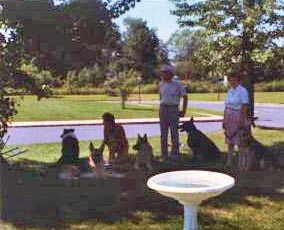 A therapy dog is a dog trained to provide company, affection or comfort to people in hospitals, retirement homes or nursing homes. The establishment of a systematic approach to the use of therapy dogs is attributed to Elaine Smith, an American who worked as a registered nurse in England. Smith noticed how well patients responded to visits by a certain chaplain and his canine companion, a golden retriever. Back in the USA in 1975, Smith started a program for training dogs to visit institutions. Working with therapy dogs is also called Animal Enhanced Therapy, Animal Assisted Activity and Animal Assisted Therapy.
A therapy dog is a dog trained to provide company, affection or comfort to people in hospitals, retirement homes or nursing homes. The establishment of a systematic approach to the use of therapy dogs is attributed to Elaine Smith, an American who worked as a registered nurse in England. Smith noticed how well patients responded to visits by a certain chaplain and his canine companion, a golden retriever. Back in the USA in 1975, Smith started a program for training dogs to visit institutions. Working with therapy dogs is also called Animal Enhanced Therapy, Animal Assisted Activity and Animal Assisted Therapy.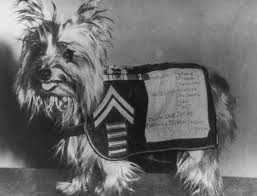 This is a picture of Smoky, a Yorkshire terrier, the world’s first known therapy dog – and war dog in WWII. The stories are fascinating. Today the effectiveness of dogs for veterans with PTSD is well established.
This is a picture of Smoky, a Yorkshire terrier, the world’s first known therapy dog – and war dog in WWII. The stories are fascinating. Today the effectiveness of dogs for veterans with PTSD is well established.In order be suitable to be a therapy dog, the canine must enjoy human contact, not mind being petted or hugged in different ways, must be friendly, patient, confident and gentle. Walking on different surface, sudden loud noises, strange sights, peeping machines, wheelchairs, commotion or crisis situations should not get him upset or cause to react negatively. He must react appropriately with other dogs or animals, walk well on leash, come when called, sit and stay when asked to do so and tolerate being lifted.
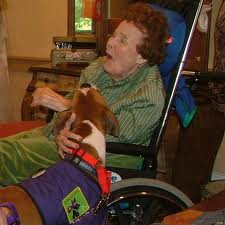 Therapy Dogs are chosen first for their temperament and are then highly trained. They actually want to do this, they have a disposition towards this kind of work. They are tested and certified for suitability for therapy work. First they have to pass the AKC Good Citizen test and then the added requirements for therapy dogs. Once a dog passes the therapy dog test, he/she is then registered and officially a therapy dog. The service as a therapy dog is one of the most rewarding things you can do with your dog.
Therapy Dogs are chosen first for their temperament and are then highly trained. They actually want to do this, they have a disposition towards this kind of work. They are tested and certified for suitability for therapy work. First they have to pass the AKC Good Citizen test and then the added requirements for therapy dogs. Once a dog passes the therapy dog test, he/she is then registered and officially a therapy dog. The service as a therapy dog is one of the most rewarding things you can do with your dog.
 Therapy Dogs are chosen first for their temperament and are then highly trained. They actually want to do this, they have a disposition towards this kind of work. They are tested and certified for suitability for therapy work. First they have to pass the AKC Good Citizen test and then the added requirements for therapy dogs. Once a dog passes the therapy dog test, he/she is then registered and officially a therapy dog. The service as a therapy dog is one of the most rewarding things you can do with your dog.
Therapy Dogs are chosen first for their temperament and are then highly trained. They actually want to do this, they have a disposition towards this kind of work. They are tested and certified for suitability for therapy work. First they have to pass the AKC Good Citizen test and then the added requirements for therapy dogs. Once a dog passes the therapy dog test, he/she is then registered and officially a therapy dog. The service as a therapy dog is one of the most rewarding things you can do with your dog.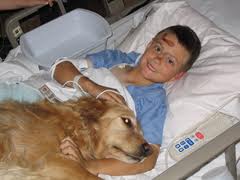 Therapy dogs come in all sizes and breeds. It is the temperament and training that matters. In recent years, therapy dogs have been enlisted to help children overcome speech and emotional disorders. Therapy dogs can also do this schools, for people with learning difficulties or generally can be used in stressful situations, even as disaster areas.
Therapy dogs come in all sizes and breeds. It is the temperament and training that matters. In recent years, therapy dogs have been enlisted to help children overcome speech and emotional disorders. Therapy dogs can also do this schools, for people with learning difficulties or generally can be used in stressful situations, even as disaster areas.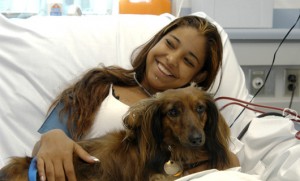 Volunteering with a therapy dog is one of most rewarding services you and your dog can offer. These special dogs seem to instinctively know what a person needs. They bring a smile to their faces or a light to their eyes. The ability to touch a gentle dog can have quite a healing and soothing effect. It has been documented that interaction with pets can help reduce a person’s pain and improve his or her well being, as well as lower blood pressure, promote relaxation, relieve agitation, anxiety and stress, and improve communication. To patients, they are a welcome change from hospital routine, from infirmity, and loneliness or depression. Their faces literally light up. There is such joy – and rather then remember the pain, they remember the dog that came to visit.Therapy dogs make it easier for patients to talk, to remember past experiences and share common ties. Physically, the dog encourages patients to stretch, move and relate to others.
Volunteering with a therapy dog is one of most rewarding services you and your dog can offer. These special dogs seem to instinctively know what a person needs. They bring a smile to their faces or a light to their eyes. The ability to touch a gentle dog can have quite a healing and soothing effect. It has been documented that interaction with pets can help reduce a person’s pain and improve his or her well being, as well as lower blood pressure, promote relaxation, relieve agitation, anxiety and stress, and improve communication. To patients, they are a welcome change from hospital routine, from infirmity, and loneliness or depression. Their faces literally light up. There is such joy – and rather then remember the pain, they remember the dog that came to visit.Therapy dogs make it easier for patients to talk, to remember past experiences and share common ties. Physically, the dog encourages patients to stretch, move and relate to others.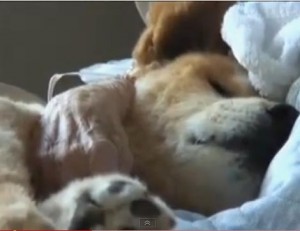 While not all dog or handlers find it suitable to work in hospice, The sight of a dog and the touch of its fur often brings peace and joy to those patients whose life once included animals. Physical contact has a calming effect and dogs have the ability to bring back pleasant memories of a person’s life.
While not all dog or handlers find it suitable to work in hospice, The sight of a dog and the touch of its fur often brings peace and joy to those patients whose life once included animals. Physical contact has a calming effect and dogs have the ability to bring back pleasant memories of a person’s life.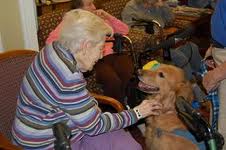 “While working with a hospice program, dogs learn to be able to sense the process an individual goes through with death. Signs may include a change in breathing, restlessness or possible disorientation. In addition to the patient, dogs and handlers often have the ability to comfort family members including children. Handlers must recognize if it’s appropriate to stay or excuse themselves when the end is near. There are times when the family may request that the therapy dog lay by the end of the bed during the patient’s final moments of life. This might be because the patient loved dogs and the sight of the dog brings a sense of normalcy for not only the patient but the family as well.”
“While working with a hospice program, dogs learn to be able to sense the process an individual goes through with death. Signs may include a change in breathing, restlessness or possible disorientation. In addition to the patient, dogs and handlers often have the ability to comfort family members including children. Handlers must recognize if it’s appropriate to stay or excuse themselves when the end is near. There are times when the family may request that the therapy dog lay by the end of the bed during the patient’s final moments of life. This might be because the patient loved dogs and the sight of the dog brings a sense of normalcy for not only the patient but the family as well.”from Therapy Dogs International (TDI®), founded in 1976 by Elaine Smith.
A therapy dog is NOT a service dog who stays with his owner (patient) and is trained to provide a certain service. Service dogs enjoy certain legal rights, such as access to restaurants, therapy dogs do not. Both kinds of dogs live a life of service.
Germs and therapy dogs: A side note from Infectious Disease: (May 8, 2009) — University of Guelph in Canada researchers investigated whether MRSA and C.difficile could be passed between pet therapy dogs and patients. The findings suggested that MRSA and C. difficile may have been transferred to the fur and paws of these canine visitors through patients handling or kissing the dogs, or through exposure to a contaminated healthcare environment. the conclusion of the study: The authors conclude that in order to contain the transmission of pathogens through contact with pet therapy animals, all patients and handlers should follow recommended hand sanitation procedures.
At age 19 years and 6 months, Baxter eased peacefully from his life on October 16th, 2009.


































